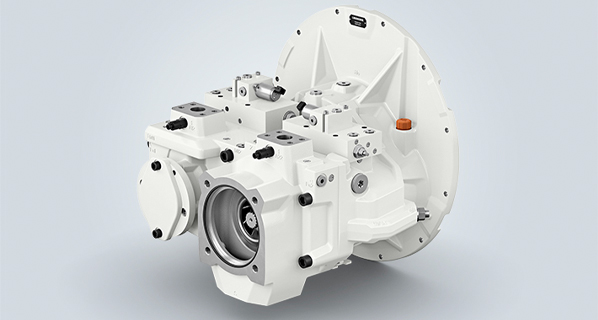Raising the bar: Focus on Energy (Revisited)

By Dan Helgerson, Fluid Power Journal Technical Editor—
An electromechanical system can operate at about 96% overall efficiency. One study showed that fluid power operates at about 21% efficiency on average. This raises a question: with the price of energy the pressure to “go green” constantly increasing, why would anyone in his or her right mind choose fluid power?
I was once on a guided tour of a major plastics injection molding facility accompanied by a group of about 20 mechanical engineers. The tour led us to an experimental molding machine that was entirely electromechanical. There was not so much as a cooling air jet blowing on the equipment. The tour guide proudly announced that the company was looking at this machine in the hope of getting away from fluid power because, he said, as everyone knows, “hydraulics is messy and expensive.” I was a guest, so I quietly and painfully bit my tongue while everyone else nodded in unquestioning agreement.
This is anecdotal, but anecdotes can show a pattern, and enough of them may even be considered data. The fact is that a substantial group of design engineers currently planning the equipment of tomorrow do not question the idea that it is wise to avoid using fluid power!
Those of us who are passionate about fluid power know that there are many good reasons to consider fluid power to do work. There is the concentration of force, the removal of heat, the flexibility, and the ability to produce both linear and rotary motion from a common power source. It can take very heavy objects and repeatedly position them within five ten-thousandths of an inch. It can create vacuum that allows us to safely pick up and move delicate and oddly shaped material.
These are all appropriate things to discuss when presenting the case for fluid power, and many of us successfully done so. However, in this article I want to focus on energy because if fluid power cannot be shown as an efficient alternative to other forms of energy transfer, then we may as well pack up our formulas and find some other line of work. The frustrating fact is that fluid power does not have to be so inefficient.
For years fluid power professionals have complained that they have to give away engineering to be competitive and sell products. This complaint spotlights the irony that we are the ones who designed the inefficient systems that now haunt us. Fluid power users have come to us professionals asking for solutions to their power-transfer needs. Some of them would not know a kilowatt from a horse radish or a BTU from a lemon drop. But we do! For us to design their systems, we must calculate the forces, speeds, pressures, and flows required to get the job done.
I once had an opportunity to supply a system in which an upward acting press had a 142 kN (32,000 lb.) platen that had to be lifted at a rate of 0.13 m/sec (5 in/sec) and then moved 0.025 m/sec (1 in/sec), applying a force of 1,335 kN (150 tons). I suggested a system using a 30-kW (40-hp) electric motor. The machine designer was skeptical and told me he did not think it would work. His company had always built similar machines with 45-kW (60-hp) electric motors to drive the hydraulic pumps.
I asked him to do the math with me. The greatest amount of power was consumed in lifting the platen. (The pressing force required relatively little power because of the low speed.) Knowing that 1 kW = 1 kNm/sec (HP = 550 lb/ft/sec), I asked him to tell me how much power would be needed to lift the platen at the rated speed. He got out his calculator and worked out 142 x 0.13 = 18.46 kW (about 25 hp). My 30-kW unit was a concession to the system’s inefficiency and the availability of the type of electric motor I planned to use.
When the finished machine arrived at its new home in a manufacturing facility, the plant engineer was skeptical because we had placed a relatively small heat exchanger on the system. He was convinced the power unit would overheat. He had several other machines with 45-kW (60-hp) electric motors, and they all had large heat exchangers. I am pleased to report that the system worked fine, and there was no problem with heat. We had simply designed much of the heat generators out of the system.
The point is this: the users of fluid power have placed themselves at our mercy. When it comes to fluid power, otherwise competent engineers sometimes lay aside what they know about physics. They want us to handle the “black box” and trust us to provide the best system. In the experience I described above, neither the machine designer nor the plant engineer had done the math to see the actual requirements to move the load. They had left it up to us, the fluid power professionals, to tell them what they needed, and we failed them. We gave them systems that worked and met the stated requirements, but the systems did not represent the best that could be done. The result was that for years machine designers had supplied inefficient systems and manufacturers paid the energy bill for that inefficiency. They accepted the wasted energy as a cost of doing business and an inherent characteristic of fluid power.
As fluid power professionals, we are pros at transferring energy. We need to think of ourselves as energy professionals specializing in fluid power. We need to involve fluid power users in the decision-making process, let them know the cost of inefficiency, then offer the most efficient system available.
We should begin thinking about the entire energy-transfer system, from the combustion engine or electric motor to the work being performed. We need to view every kW wasted, every scfm tossed away, and every BTU removed as an opportunity for improvement.
To do less would be a disservice to our profession and to those who depend on our expertise.
Related Posts

Raising the bar: Something for Your Toolbox

Liebherr Expands Axial Piston Line, Launches Configurator at bauma

Creating a Safer Workplace With a Few Simple Hose Management Changes

Stabilus Enters Partnership with Cultraro Automazione Engineering

Helios Technologies Acquires Taimi R&D

Schaevitz Releases LPPS-36B Series Position Sensor
2 thoughts on “Raising the bar: Focus on Energy (Revisited)”
Leave a Reply Cancel reply
Get Our Enews!
Sign up for the FPJ Insider Guide
Sign up to receive fluid power industry news, economic updates, professional development content, and product news delivered right to your inbox.
We will never share your data with a third party without your permission. Adjust your email preferences at any time, and unsubscribing is quick and easy.
Fluid Power Journal Resources


Very interesting discussion, Dan, and I agree with all your points. One implication is that the designers of these inefficient systems were simply journeymen who were getting by on the bare necessities. They didn’t have the knowledge or experience to design systems worked and with high efficiency. The other implication is that the designers could have proposed more efficient systems, but didn’t. I propose that this was because they knew that using more efficient components and circuits would’ve increased cost of the system. The end result is that the customer would go with the cheaper design with little or know regard for efficiency.
Now, course, we talk about total cost of ownership, which places great importance on efficiency. But I suppose the end result is not that different from the past. With so many companies making decisions based on economics, many decision-makes are very reluctant to pull the trigger on a design that, on paper, promises lower cost of ownership.
Again, Dan, thanks for this well-thought out discussion.
Alan,
Thank you for your comment. It has been my experience and practice that more efficient systems are not necessarily more expensive then traditional systems. The more efficient system may reduce the size of the reservoir, reduce the size of or eliminate the need of the heat exchanger, reduce the size of the prime mover, and reduce the pump displacement.
When our sales engineers become competent and confident to have energy be part of the sales presentation, they will find an open door of opportunity. In some applications, the sales pitch may not be to the purchaser, but to the Chief Financial Officer. The CFO is often unaware of the potential cost savings and can be an influence in making the improvements..